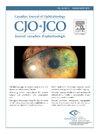眼部整形手术的跨学科质量改进:通过 PDSA 循环改变活检随访。
IF 2.8
4区 医学
Q1 OPHTHALMOLOGY
Canadian journal of ophthalmology. Journal canadien d'ophtalmologie
Pub Date : 2024-08-14
DOI:10.1016/j.jcjo.2024.07.005
引用次数: 0
摘要
目的通过确定绝对达标率、检查各阶段之间的延误、找出妨碍高质量随访的因素并提出改进建议,评估和提高眼周活检随访的质量:第一阶段:对2019年1月至2022年10月期间在舍布鲁克大学中心医院(CHUS)接受眼周活检的成年患者进行病历审查,开展一项回顾性、观察性和描述性研究。第二阶段:同时实施三个 "计划-实施-研究-行动"(PDSA)周期,重点是加强临床医生与病理学家之间的沟通渠道、引入紧急病例优先系统以及建立病理学家自动提醒系统:第一阶段:在分析的 103 例患者中,29 例为恶性病变,74 例为非恶性病变。恶性病变的绝对符合率为 37.9%。所有未达标病例都是由于出具病理报告的周转时间(TT)过长所致。恶性病变病理周转时间充足(≤ 7 天)的病例比例为 37.9%,远低于魁北克卫生部的目标(≤ 7 天的病例比例为 80%)。第二阶段:实施 PDSA 循环后,恶性病变的绝对达标率和病理 TT 达标率显著提高。主要结果显示,绝对达标率增至 93.3%。次要结果显示,病理 TT 符合率也达到了 93.3%:病理报告延迟是导致随访效果不理想的主要原因。有针对性的 PDSA 循环的成功实施改善了沟通、优先顺序和提醒系统,从而显著改善了主要和次要结果。本文章由计算机程序翻译,如有差异,请以英文原文为准。
Interdisciplinary quality improvement in oculoplastic surgery: transforming biopsy follow-up through PDSA cycles
Objective
To evaluate and improve the quality of periocular biopsy follow-up by determining the absolute compliance rate, examining delays between stages, identifying obstacles to high-quality follow-up, and offering recommendations for improvement.
Methods
Phase 1: A retrospective, observational, and descriptive study was conducted using chart reviews of adult patients who underwent periocular biopsies at the Centre Hospitalier Universitaire de Sherbrooke (CHUS) from January 2019 to October 2022. Phase 2: Three simultaneous Plan-Do-Study-Act (PDSA) cycles were implemented, focusing on enhancing communication channels between clinicians and pathologists, introducing a priority system for urgent cases, and establishing an automatic reminder system for pathologists.
Results
Phase 1: Among the 103 patients analyzed, 29 had malignant lesions, while 74 had nonmalignant lesions. The absolute compliance rate was 37.9% for malignant lesions. All of these noncompliances were due to excessive turnaround time (TT) to issue the pathology report. The percentage of cases that had adequate pathology TT (≤ 7 days) were 37.9% for malignant lesions, much lower than the Quebec Ministry of Health's target (80% at ≤7 days). Phase 2: The implemented PDSA cycles led to significant increases in absolute compliance rates and pathology TT compliance rates for malignant lesions. Primary outcomes showed that the absolute compliance rate increased to 93.3%. Secondary outcomes indicated that the pathology TT compliance rate also reached 93.3%.
Conclusions
Delayed pathology reporting was identified as the primary cause of suboptimal follow-up. The successful implementation of targeted PDSA cycles improved communication, prioritization, and reminder systems, resulting in considerable improvements in primary and secondary outcomes.
求助全文
通过发布文献求助,成功后即可免费获取论文全文。
去求助
来源期刊
CiteScore
3.20
自引率
4.80%
发文量
223
审稿时长
38 days
期刊介绍:
Official journal of the Canadian Ophthalmological Society.
The Canadian Journal of Ophthalmology (CJO) is the official journal of the Canadian Ophthalmological Society and is committed to timely publication of original, peer-reviewed ophthalmology and vision science articles.

 求助内容:
求助内容: 应助结果提醒方式:
应助结果提醒方式:


